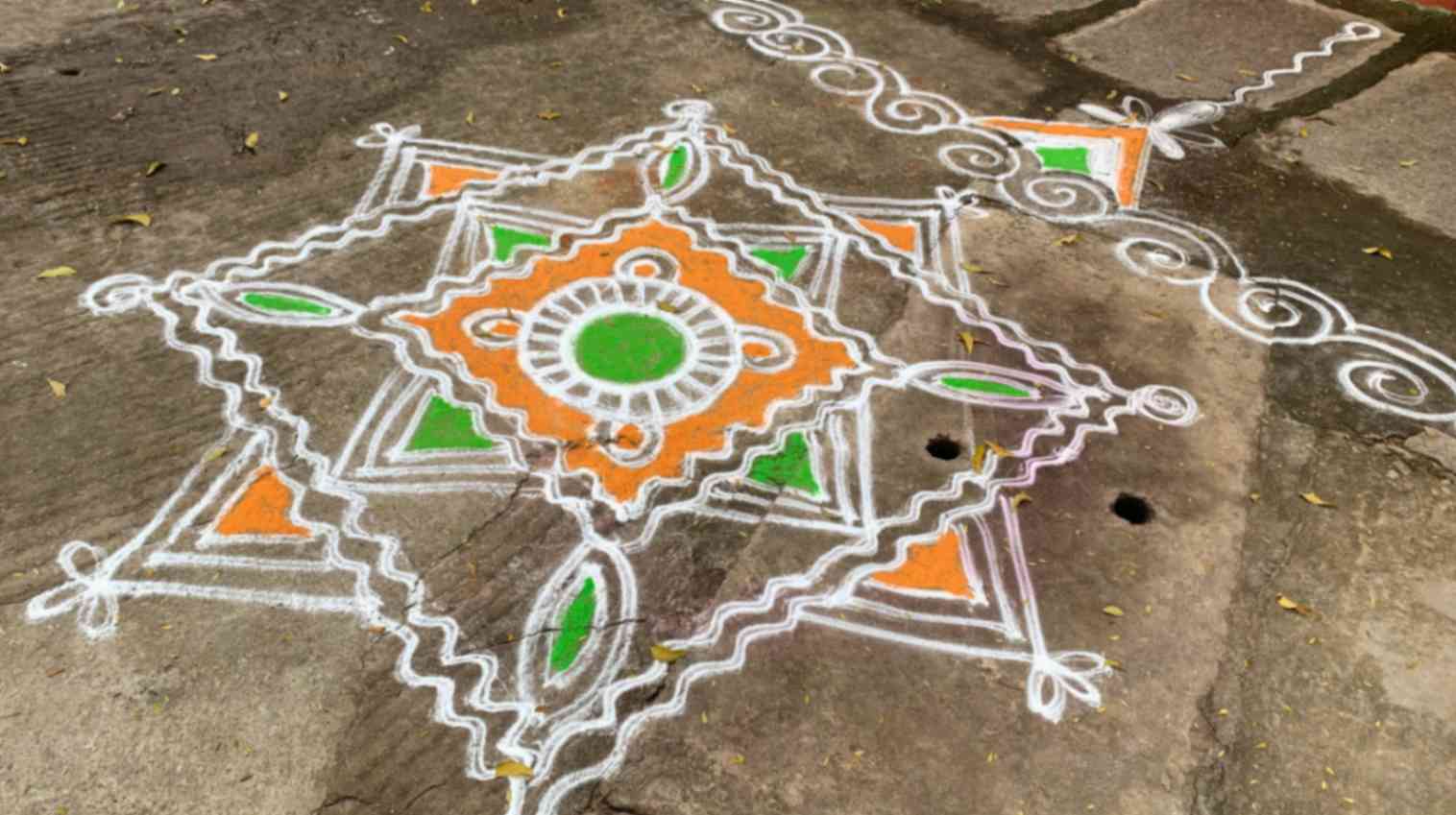Growing up in South India means we have witnessed, white color drawings outside the doorstep of most houses. Kolam is this art form, it is ancient and dates back over 5000 years, it is simple, elegant, and can be quite a great way to start every refreshing morning, to add a bit of celebration into every day and aesthetically pleasing designs in the entrance of the house.
So, in Southeastern India, generally, most Hindu household women have a ritual in the early mornings of making this artform, usually in Brahmamuhurta (believed to be the time when Brahma and all other deities descend to the earth) Sometimes before dusk in the evenings, millions of women in the town, villages and the cities of South India and especially Tamilnadu and Pondicherry draw Kolam on the thresholds and floors of houses, temples and businesses.
The word kolam in the Tamil language means form and beauty.
A symbol of auspiciousness and divinity, it is made with rice flour, finely ground rice powder /paste (called kola-podi in Tamil ), or at times vegetable and mineral-based colored powders on carefully swept grounds and water sprinkled and cleaned grounds.
- Once the floor or ground is cleaned, women take this powder in a pinching-like manner at the tips of their fingers and start gently drawing the pattern by letting the powder fall in a controlled way to obtain the desired design.
- Sometimes they make the patterns in lines using straight and curved lines.
- Sometimes they make it with dots and encircle the dots with curved lines in a continuous pattern
- They have several dots and lines for every Rangoli design they are making, it’s quite mathematical considering how they maintain the ratio, proportion, and number in consideration while making.
- The process involves concentration, memory, and a series of disciplined hand and body movements.
- The designs can vary from simple to complex depending on the events, occasion, or season they are made in.
- For special occasions to make the design hold longer, the rice flour is made wet by adding water. A small cloth piece folded over (or a paper towel) is dipped into the liquid rice paste and placed between the thumb, the forefinger, and the middle finger and pressed until drops of wet white rice flour pour through the front end of the three fingers. The patterns are then created, almost as if the fingers were acting as an ink pen. These semi-permanent patterns are called Makolam. The challenge here is to ensure that the rice flour spreads evenly on the ground in a smooth, continuous, flowing manner so that the shapes appear smooth and even.
The rice flour used to draw patterns feeds ants, squirrels, and smaller birds such as sparrows, creating a harmonious way of living with nature.
Through the day, the drawings get eaten, walked on, washed out in the rain, or blown around in the wind, and new ones are made the next day.
Interesting news – A woman who lost her memory for ten years regained it by practicing this art form
This is more of Science and Mathematics than art.
Each region has its distinct version of Kolam or Rangoli.
- Muggulu (Muggu): Andhra
- Alpana: Bengal
- Puvidal: Kerala
- Chowkpurna: Madhya Pradesh
- Rangoli: Maharashtra, Karnataka
- Mandana: Rajasthan
- Kolam: Tamil Nadu
- Sanjhi: Uttar Pradesh
These rangolis in different states also have a social aspect to them. During the sacred Margazhi month, women compete with one another in a spirit of playful competition in the pattern designing contests organized in cities, towns, and villages in Tamil Nadu.
However, the art of drawing these magnificent geometrical patterns at the very entrance is limited to the geographical boundaries of India but also holds great cultural significance in Sri Lanka, Singapore, Thailand, and a few other Asian countries.
Today, these geometrical decorations play an auspicious and therapeutic part in Indian households gaining an aesthetic value over the years and signifying a special place in Indian culture. Our art school hence especially focuses on keeping these cultural identities alive and offers various courses on antique Indian art forms intending to spread the essence of noble traditional values. Click on the links below to access more of our art-related content.




